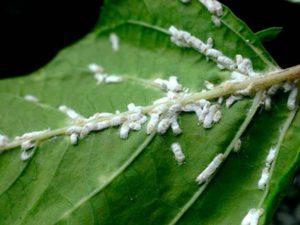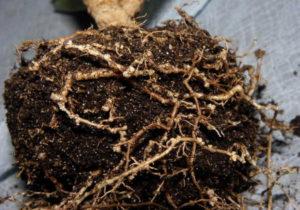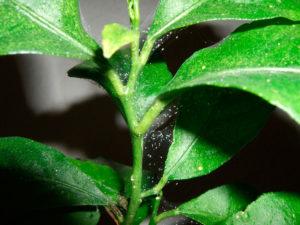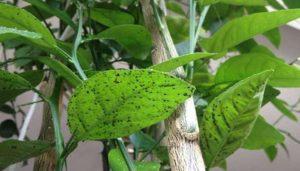Pests on indoor plants: 12 photos and names of insects
Beautiful indoor plants are the pride of any housewife. But sometimes lush greenery begins to wither and you need to look for the reason for such dramatic changes in growth. And often this is due to pests that have settled on indoor plants.
Content
Possible causes of plant infection
There are several houseplant pests that appear suddenly and often there is no clear reason why their green pets begin to wither. Here's where harmful insects can come from:
- plants in the warm season were transferred from the premises to the open space: to the street, veranda or taken to the balcony;
- left at an open window through which pests could enter;
- they bought a new plant, and put it together with others, but it turned out to be infected with pests;
- transplanted into fresh soil, without having previously processed it;
- mistakes in care: waterlogging or drying out of the soil, lack of lighting, as a result of which the diseased plant's resistance decreases, and pests take advantage of this.
It is impossible to foresee all the reasons, so it is important to notice the problem in a timely manner and try to start pest control as early as possible. Regular inspection of green pets will help with this.
Pests of indoor plants
It is possible to get rid of the parasite, if you correctly determine its type and how to get rid of it correctly.
Shield and false shields
But the methods of dealing with these varieties are the same.
- You can destroy the scale insects if you hold the plant under a hot shower with a water temperature of about 50 degrees.
- Collect them by hand, sweeping with a soft brush from leaves and shoots.
- Processing with a strong solution of laundry or green soap will also give a good result.
- The use of chemicals to treat a plant is possible only in rare cases.
Mealybug
A grayish or creamy pest, whose body is covered with a powdery coating, its size is up to 5 mm, it is also called a hairy louse.  The mealybugs are placed in small groups on the shoots, suck the juice from them, and secrete a sweet liquid - honeydew, similar to cotton balls. The sweet taste of a waste product provokes the appearance of a fungus, a dangerous infectious disease.
The mealybugs are placed in small groups on the shoots, suck the juice from them, and secrete a sweet liquid - honeydew, similar to cotton balls. The sweet taste of a waste product provokes the appearance of a fungus, a dangerous infectious disease.
The mealybug is omnivorous and easily moves from one plant to another if the pots are nearby. When a parasite is found, you should immediately begin to deal with it.
Plant treatment will help:
- strong soapy water;
- showering;
- manual collection of the pest.
Alcohol tincture can wipe the leaves and shoots to destroy the pest. But immediately you need to try on one piece of paper, so as not to harm.
root bug
The root bug is much more dangerous than the mealybug. It appears on the roots of the plant and is difficult to detect. The owner has no idea why the flower withers.
But only by shaking it out of the pot, you can see the roots, as if sprinkled with flour. This is a large family of root pests.
If a root bug is wound up, then the roots should be washed in water, at a temperature of about 50 degrees, the pot should be disinfected and the soil should be changed.
Insecticide treatments are effective in advanced cases, but they should be applied according to the instructions so as not to harm the delicate roots.
spider mite
The spider mite is a small insect, up to 1 mm in size, and it is quite difficult to notice it. But about the appearance of this pest, you can find out about the presence of small, bright puncture points on the leaves and a silvery web on the plant. There are several types of spider mites:
- ordinary;
- Pacific;
- red.
Spider mite is one of the most dangerous pests of indoor plants. It settles very quickly, falling on a flower, after a short period of time the whole plant is covered with a sticky web. Ticks suck useful substances out of it. The leaves turn yellow and crumble, a weakened plant becomes infected with a fungus and dies.
Plants with succulent leaves are especially susceptible to the mite, but it can appear on any plant. The pest must be dealt with immediately.
Before processing, cut off all affected leaves from the plant.
From folk remedies, plant treatments are effective:
- infusion of Persian chamomile;
- hogweed;
- basilica;
- tea tree;
- creeping tenacity.
You can use Fairy dishwashing detergent, it is diluted with a small amount of water and foam is whipped, applied to the plant for 30 minutes and then washed off. The soil under the flower should be covered with foil or polyethylene.
TRIPS
Thrips are one of the most common pests, both on indoor plants and on trees, grass, vegetables and berries. They quickly move from plant to plant, eating all the greenery on the way.
The body of thrips is elongated, up to 3 mm in length and is colored light yellow or brown.
They reproduce at an astonishing rate, some larvae are born already pregnant and do not need a partner to mate. Adults can fly, and with great speed capture new territories.
Thrips love pollen, but do not refuse tender and juicy leaves, leaving yellow dots-punctures and black dots of excrement on their surface. Thrips prefer flowering indoor plants with soft leaves, and with thick and dense leaves, they suffer less from pest invasion.
Folk methods of dealing with thrips:
- a large number of insects accumulate in flowers and unblown buds, so they must be removed before processing the plant;
- flower growers advise an effective method: treatment with flea shampoo. It must be dissolved in a small amount of water, whipped into foam and applied to leaves and shoots. After half an hour, the foam from the plant must be thoroughly washed off.
Sciarides
Sciarids or mushroom mosquitoes, black midges that fly over the plant and indoors. The larvae of the mushroom mosquito are in the soil, and it is not easy to notice them.
Several species are known that live in the middle zone of the country, these are brasidia, sciara, licoriela.
| Larvae | Mosquitoes themselves are not as dangerous as their larvae. They live in the soil and feed on roots. After mating, the sciarids lay their eggs in warm soil, in which small worm-faces develop. |
| How to detect | And flying black midges speak by their presence. The worms are not deep, and you can find them by removing the top of the soil. |
| How to destroy | To successfully get rid of a harmful insect, it is important to remove the larvae, as well as adults, otherwise a new generation will appear after a while. Egg laying is shallow, drying the topsoil will help destroy them. Sprays are used to destroy flying individuals. And suitable chemicals are used to cultivate the soil around the plant. |
| Prevention | To prevent the appearance of sciarids, you do not need to use food waste, tea leaves or eggshells to feed plants. |
aphid
Aphids on indoor plants do not appear often. The pests are green and hard to miss. Large up to 2 mm wingless insects with thick translucent bellies sit on stems and leaves. Flying aphids mate and migrate to other plants. There are such types of aphids:
- greenhouse;
- peach;
- nymphaeal.
These insects feed on plant sap. They pierce shoots and leaves with a sharp proboscis. In the process of life, aphids secrete honeydew, which sticks together leaves and buds. These secretions attract ants.
To successfully fight aphids, both the plant and the soil are treated, because it also contains larvae.
The flower on which the aphid has settled is washed in the shower, the pests are weak and easy to wash off. Can be treated with a solution of laundry soap or infusion of citrus peels.
Aphids do not tolerate the smell of geraniums, you can put this plant next to the one that has aphids.
Whitewoods
The whitefly is dangerous for plants because it destroys them completely in a short time. Outwardly, it looks like a small yellowish moth, its wings are covered with a white mealy coating. Both larvae and adult butterflies are dangerous.
With a sharp proboscis, she pierces the leaves, releasing a sticky pad that clogs the pores and develops chlorosis.
It is not easy to fight the whitefly, the plant may be needed several times, changing preparations, it is very tenacious. Before treatment, insects are washed off under running water. Adults are destroyed:
- fumigator for mosquitoes;
- sticky tape for flies;
- glue trap;
- sprayed with a strong solution of green soap;
- sprinkle the soil in a pot with wood ash.
Other types of insects
There are also other pests:
- fools;
- centipedes;
- slippery;
- nematodes.
It is also necessary to fight them with the help of folk remedies or chemicals.
Useful Tips
Experienced flower growers advise how to prevent or prevent infection of indoor plants with pests:
- A purchased new plant may be infested but look healthy, and symptoms may appear later when the pests have multiplied. You need to put it separately from the others and watch it for a while.
- Examine plants. If harmful insects are found on one of them, it is isolated from others and treatment is started immediately.
- The ground before planting can be calcined in the oven or frozen to destroy the larvae or eggs of harmful insects.
- If there are not many pests on the plant, folk remedies can be used. If the lesion is severe, then it is better to immediately apply chemicals.
- Follow the rules of care: watering, fertilizing.
Conclusion
If insect pests appear on a houseplant, the first thing to do is to determine which type of pest has settled and immediately begin control measures. Experienced flower growers note that the sooner you start fighting them, the more chances you have to save green pets.
Previous


